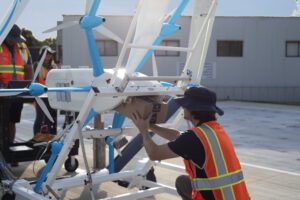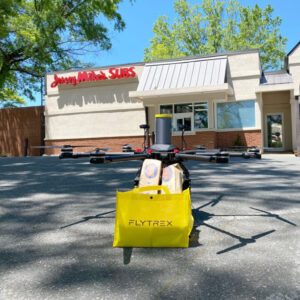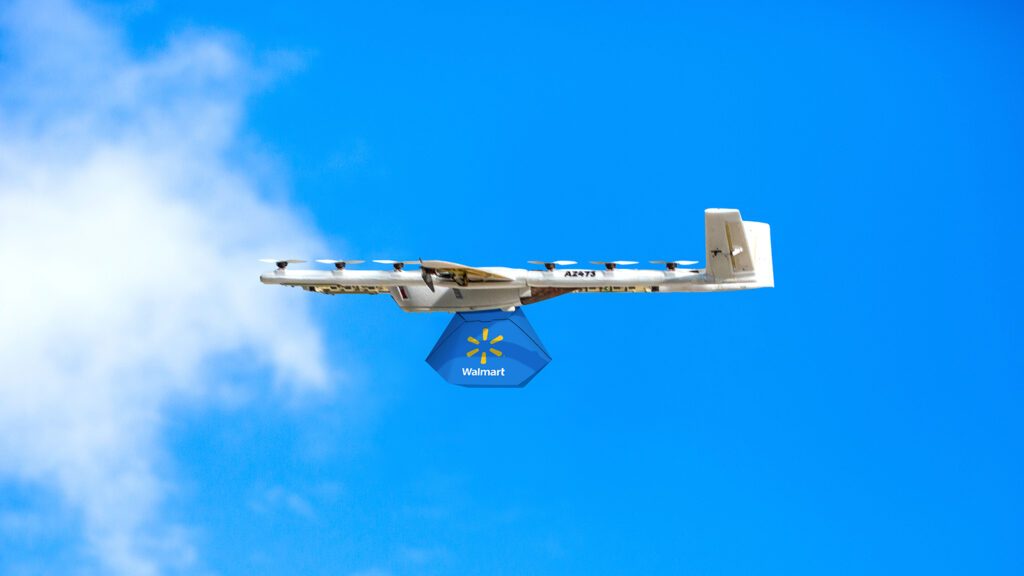
The drone delivery sector has been the subject of numerous articles in recent months, with a variety of news outlets discussing its potential. A report from Future Market Insights projects significant growth for the industry, estimating that the global drone delivery service market could reach up to US$ 7,217.4 million by 2033, from a valuation of US$ 426.1 million in 2023.
Major companies such as Amazon (NASDAQ:AMZN), Alphabet (NASDAQ:GOOGL), and NVIDIA (NASDAQ:NVDA) have been noted by InvestorPlace specifically for their involvement in the drone delivery ecosystem, saying that Amazon’s integration of Prime Air drone deliveries into its distribution network marks a significant strategic move:
“Instead of operating from separate Prime Air delivery centers, drones will now be deployed from same-day delivery centers in the US. This move underscores Amazon’s ambition to seamlessly incorporate drone technology into its day-to-day fulfillment operations, with the goal of improving the retail experience and creating a safer and more sustainable delivery model.”
NVIDIA is noted in the InvestorPlace article for their edge computing components found in drone delivery systems including Zipline – a global drone delivery company valued in 2023 at a stunning $4.2 billion.


Retail giants, including Amazon and Walmart, and fast food chains have been implementing drone delivery for their products, ranging from hot coffee to cold ice cream, where regulations permit for a few years. Globally, the number of successfully completed drone deliveries is well into the millions, establishing an impressive safety record.
However, current regulatory limitations mean that drone delivery still requires some investment: infrastructure, regulatory work, pilot training and more combined with limitations on how far delivery drones can fly, how much they can carry, and how many staff are required make drone delivery more expensive currently than it needs to be.
In 2023, the Federal Aviation Administration (FAA) granted waivers to several drone delivery companies, allowing for flight beyond visual line of sight (BVLOS). This development has the potential to increase the scale of drone delivery operations. Other waivers also make drone delivery at scale more viable: Matternet, for example, received a waiver that could permit a single pilot to operate multiple delivery drones. (The waiver is currently only valid at the Matternet test site, but will enable the company to gather data to support commercial deployment.) Developments like these change the economic case for drone delivery significantly: and could open the field to second movers.
The industry is also anticipating the FAA Reauthorization in 2024, which could lead to a ruling on commercial BVLOS flight. (The current version of FAA Reauthorization under discussion in the Senate includes wording that would force the FAA to issue a ruling on a timeline from passage of Reauthorization.)
Environmental and Geopolitical Factors
The increasing focus on clean transportation systems due to climate crises, and the rise in military investment in unmanned aerial vehicle platforms due to geopolitical pressures, are additional factors influencing the drone delivery sector.
While the drone delivery industry 2024 is poised for growth, it’s important to note that its success will depend on a variety of factors, including regulatory developments, technological advancements, and market acceptance.
Miriam McNabb is the Editor-in-Chief of DRONELIFE and CEO of JobForDrones, a professional drone services marketplace, and a fascinated observer of the emerging drone industry and the regulatory environment for drones. Miriam has penned over 3,000 articles focused on the commercial drone space and is an international speaker and recognized figure in the industry. Miriam has a degree from the University of Chicago and over 20 years of experience in high tech sales and marketing for new technologies.
For drone industry consulting or writing, Email Miriam.
TWITTER:@spaldingbarker
Subscribe to DroneLife here.
